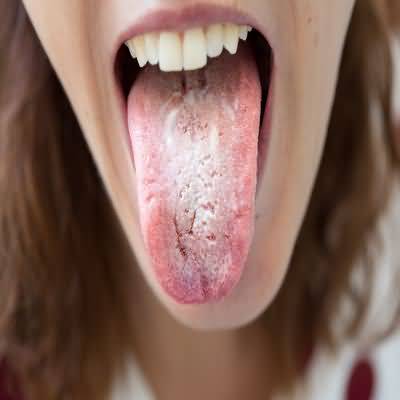oral candidiasis
oral candidiasis
ESSENTIALS OF DIAGNOSIS
Clinical Findings
Oral candidiasis (thrush) is usually painful and looks like creamy-white curd-like patches overlying erythematous mucosa
Because these white areas are easily rubbed off (eg, by a tongue depressor) unlike leu koplakia or lichen planus—only the underlying irregular erythema may be seen
Oral candidiasis is commonly associated with the following risk factors:
Another manifestation of candidiasis is angular cheilitis (also seen in nutritional deficiencies)
The diagnosis is made clinically
A wet preparation using potassium hydroxide will reveal spores and may show non septate mycelia
Biopsy will show intraepithelial pseudomycelia of Candida albicans
Candidiasis is often the first manifestation of HIV infection, and HIV testing should be considered in patients with no known predisposing cause for Candida overgrowth
The US Department of Health Services Clinical Practice Guideline for Evaluation and Management of Early HIV Infection recommends examination of the oral mucosa with each clinician visit as well as at a dental examination every 6 months for individuals infected with HIV
Treatment
Effective antifungal therapy may be achieved with any of the following: fluconazole (100 mg orally daily for 7 days), ketoconazole (200–400 mg orally with breakfast [requires acidic gastric environment for absorption] for 7–14 days), clotrimazole troches (10 mg dissolved orally five times daily), or nystatin mouth rinses (500,000 units [5 mL of 100,000 units/mL] held in the mouth before swallowing three times daily)In patients with HIV infection, however, longer courses of therapy with fluconazole may be needed, and oral itraconazole (200 mg/day) may be indicated in fluconazole-refractory cases
Many of the Candida species in these patients are resistant to first-line azoles and may require newer drugs, such as voriconazole
In addition, 0
12% chlorhexidine or half-strength hydrogen peroxide mouth rinses may provide local relief
Nystatin powder (100,000 units/g) applied to dentures three or four times daily and rinsed off for several weeks may help denture wearers


















